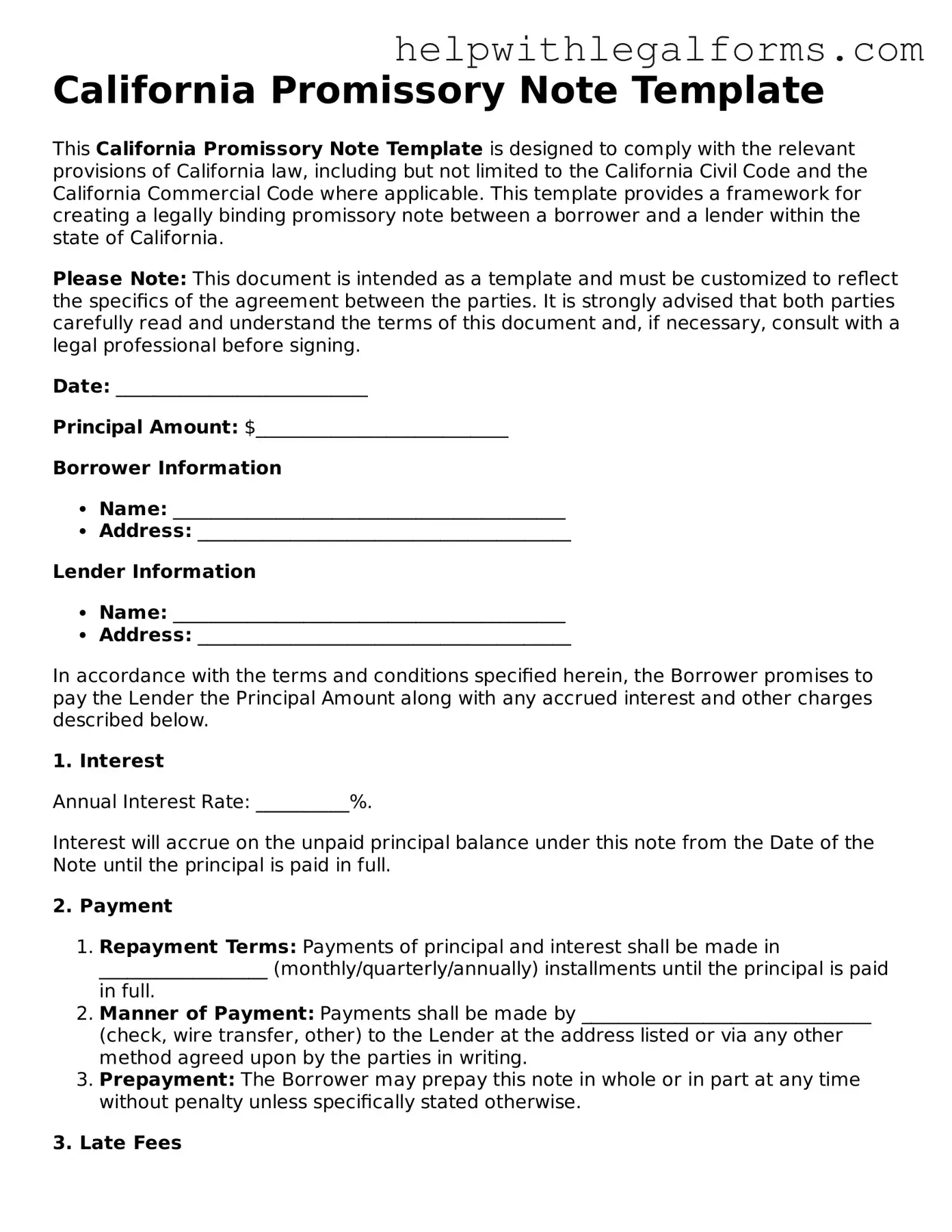California Promissory Note Template
This California Promissory Note Template is designed to comply with the relevant provisions of California law, including but not limited to the California Civil Code and the California Commercial Code where applicable. This template provides a framework for creating a legally binding promissory note between a borrower and a lender within the state of California.
Please Note: This document is intended as a template and must be customized to reflect the specifics of the agreement between the parties. It is strongly advised that both parties carefully read and understand the terms of this document and, if necessary, consult with a legal professional before signing.
Date: ___________________________
Principal Amount: $___________________________
Borrower Information
- Name: __________________________________________
- Address: ________________________________________
Lender Information
- Name: __________________________________________
- Address: ________________________________________
In accordance with the terms and conditions specified herein, the Borrower promises to pay the Lender the Principal Amount along with any accrued interest and other charges described below.
1. Interest
Annual Interest Rate: __________%.
Interest will accrue on the unpaid principal balance under this note from the Date of the Note until the principal is paid in full.
2. Payment
- Repayment Terms: Payments of principal and interest shall be made in __________________ (monthly/quarterly/annually) installments until the principal is paid in full.
- Manner of Payment: Payments shall be made by _______________________________ (check, wire transfer, other) to the Lender at the address listed or via any other method agreed upon by the parties in writing.
- Prepayment: The Borrower may prepay this note in whole or in part at any time without penalty unless specifically stated otherwise.
3. Late Fees
If any payment is more than __________ days late, the Borrower agrees to pay a late fee of $________ or ________% of the overdue amount, whichever is greater.
4. Default
In the event of default, the Lender may declare the entire outstanding balance under this note immediately due and payable. The Borrower agrees to pay all costs of collection, including reasonable attorney fees, should it become necessary to collect this note through legal action.
5. Governing Law
This note shall be governed by and construed in accordance with the laws of the State of California.
Signatures
This document is legally binding and has been entered into voluntarily by both parties. The undersigned agree to abide by and fulfill the terms of this note as set forth above.
Borrower Signature: __________________________ Date: __________________
Lender Signature: ___________________________ Date: __________________
